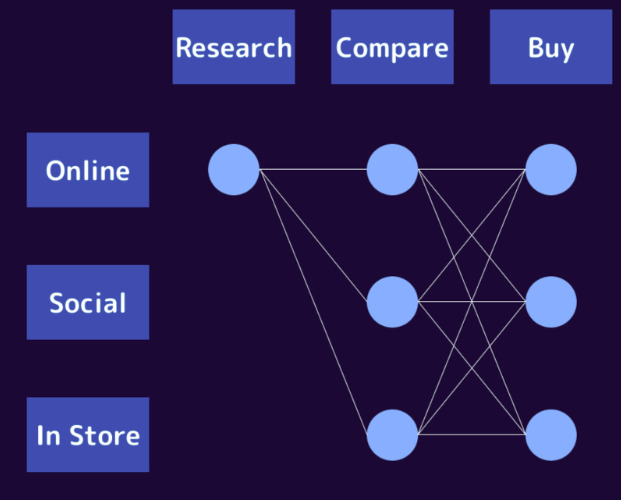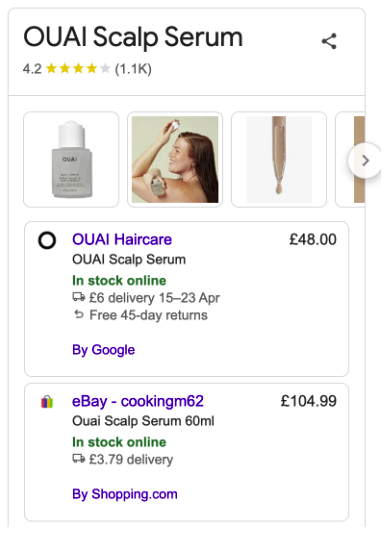In recent years, economic uncertainty has become the new normal. From global supply chain disruptions to inflation, consumers are feeling the pressure. For eCommerce businesses, ignoring these shifts isn't an option.

While we can't control macroeconomic trends, we can understand how they influence customer behavior. Armed with this knowledge, we can strategically adjust our eCommerce sites and marketing efforts to not only weather the storm but also uncover new growth opportunities.
This article will explore the key changes in consumer behavior during economic downturns and provide actionable SEO and UX strategies to optimize your eCommerce website for today's savvy, budget-conscious shopper.
Step 1: Understand Your Customer's New Buying Habits
To effectively adapt, you first need to understand how your target audience's mindset and purchasing habits have changed.
1. Dive into Your Own Data
The most accurate insights will come from your own customer base.
- Analytics are Your Best Friend: Use tools like Google Analytics to monitor changes in traffic sources, user journeys, bounce rates, and conversion rates. Are customers spending more time on comparison pages? Are they using more specific search terms?
- User Behavior Analysis: Tools like Hotjar or Microsoft Clarity provide heatmaps and session recordings to visualize how users interact with your pages. This can reveal friction points in the new customer journey.
- Direct Customer Feedback: Don't be afraid to ask. Use online surveys to gauge consumer confidence, budget changes, and what they value most right now (price, quality, service). Conduct user interviews for deeper qualitative insights.
2. Leverage Industry Reports
Supplement your internal data with broader industry reports from sources like McKinsey, Boston Consulting Group (BCG), or Nielsen. Look for recent studies on consumer sentiment and eCommerce trends in your specific region and vertical.
Key Shifts in Consumer Behavior
During turbulent economic times, several patterns emerge:
- Price Sensitivity Increases: Consumers become more focused on value for money. They are more receptive to discounts, coupons, and promotions.
- Decision-Making Slows Down: Impulse buys decrease. Shoppers spend more time researching alternatives, comparing prices across different platforms, and reading reviews.
- Prioritizing Essentials: Spending on non-essential items may be reduced, while essentials, health, and self-improvement products often remain priorities.
- Service & Experience Matter More: While price is a key factor, a poor experience can easily deter a purchase. Fast shipping, clear return policies, and responsive customer service become critical differentiators.
Key Takeaways:
- The comparison and consideration phases of the buyer's journey are now longer and more critical.
- Customers are not just looking for "cheap," they are looking for "smart" buys—the best possible value.
- Trust and convenience (shipping, returns) are crucial for converting hesitant shoppers.
How to Optimize Your eCommerce Site for Savvy Shoppers
With these behavioral shifts in mind, let's focus on actionable optimizations for your website.
Strategy 1: Refine Your Indexation Strategy to Capture Long-Tail Searches
As users become more specific in their research, your site must be able to capture this highly-qualified, long-tail search demand.
Imagine a user is no longer searching for "dress" but for "blue chiffon v-neck midi dress" or "sustainable formal dress under $100." If your site only has a broad "dresses" category page, you're missing out on this high-intent traffic.
- Granular Categories & Facets:
- Detailed Categories: Create more specific sub-categories based on user demand and product attributes.
- Rich Filtering (Facets): Offer a comprehensive set of filters (brand, color, size, material, style, features) to help users narrow down their choices.
- Create Faceted Pages: For popular filter combinations (e.g., "blue midi dresses"), ensure these faceted navigation pages are indexable and optimized. This requires careful technical SEO to avoid creating duplicate content. A SeoSpeedup Technical Audit can help identify issues with faceted navigation and ensure your URL parameters are handled correctly with canonical tags.
- Content for the Consideration Phase:
- Buying Guides & Blog Posts: Create high-quality content that answers long-tail questions like "how to choose the right running shoes" or "down vs. synthetic fill jackets." This builds trust and captures users earlier in their journey.
- FAQ Pages: Optimize FAQ pages to rank for question-based queries and potentially win featured snippets in search results.

A robust indexation strategy ensures you are visible at every stage of the user's increasingly detailed search process.
Strategy 2: Simplify Product Comparison to Accelerate Decisions
Since users are comparing options more than ever, make it as easy as possible for them to do so on your site.
- Optimize Product Listing Pages (PLPs):
- Intelligent Sorting: Go beyond simple price or best-seller sorting. Consider a "recommended" sort order that balances popularity, margin, stock levels, and newness. A great tactic is to showcase product differentiation, placing visually similar but functionally different products next to each other to highlight unique selling points.
- Surface Key Information: Display essential information directly on the PLP, such as user ratings, key specs, sale badges, and stock availability. This reduces the need for users to click back and forth between the PLP and Product Detail Pages (PDPs).
- Provide Rich Decision-Making Tools:
- Comparison Features: For tech, appliances, or other spec-heavy products, offer a clear side-by-side comparison tool.
- Visual Commerce: Use high-quality images, 360-degree views, product videos, and even AR "try-on" features to help users understand the product more intimately.
- Social Proof: Integrate user-generated content like customer photos and videos ("shoppable galleries") to show products in real-world contexts.
Strategy 3: Amplify Trust Signals to Secure the Conversion
When a shopper is on the fence, trust is often the deciding factor.
- Leverage User Reviews:
- Encourage Authentic Reviews: Proactively ask customers for reviews, especially those that include photos or detailed feedback.
- Showcase Reviews Effectively: Feature ratings, review counts, and excerpts prominently on both PLPs and PDPs. Don't hide negative reviews; responding to them publicly shows transparency and builds trust.
- Use Review Schema Markup: Implement
AggregateRatingandReviewschema to enable star ratings in the SERPs. This can significantly improve click-through rates. You can also useProsandConsschema for an even richer snippet.
 (Example of star ratings in Google SERPs)
(Example of star ratings in Google SERPs)
- Other Essential Trust Signals:
- Clear Policies: Make your shipping, return, and warranty policies easy to find and understand.
- Brand Story: Share your company's mission and values to build an emotional connection.
- Security Badges: Display payment security and data privacy seals.
- Accessible Support: Provide multiple, easy-to-find options for customer support.
Conclusion: Embrace the Change, Win the Savvy Shopper
Economic shifts are a constant. Instead of viewing them as a threat, see them as an opportunity to sharpen your strategy. By deeply understanding your customers, refining your technical SEO to meet their specific needs, simplifying their decision-making process, and amplifying trust, you can build a resilient eCommerce business that thrives in any economic climate.
Continuous optimization is key. Keep monitoring user behavior, testing new approaches, and iterating on your site experience to win the hearts and minds of today's "smarter" shoppers.